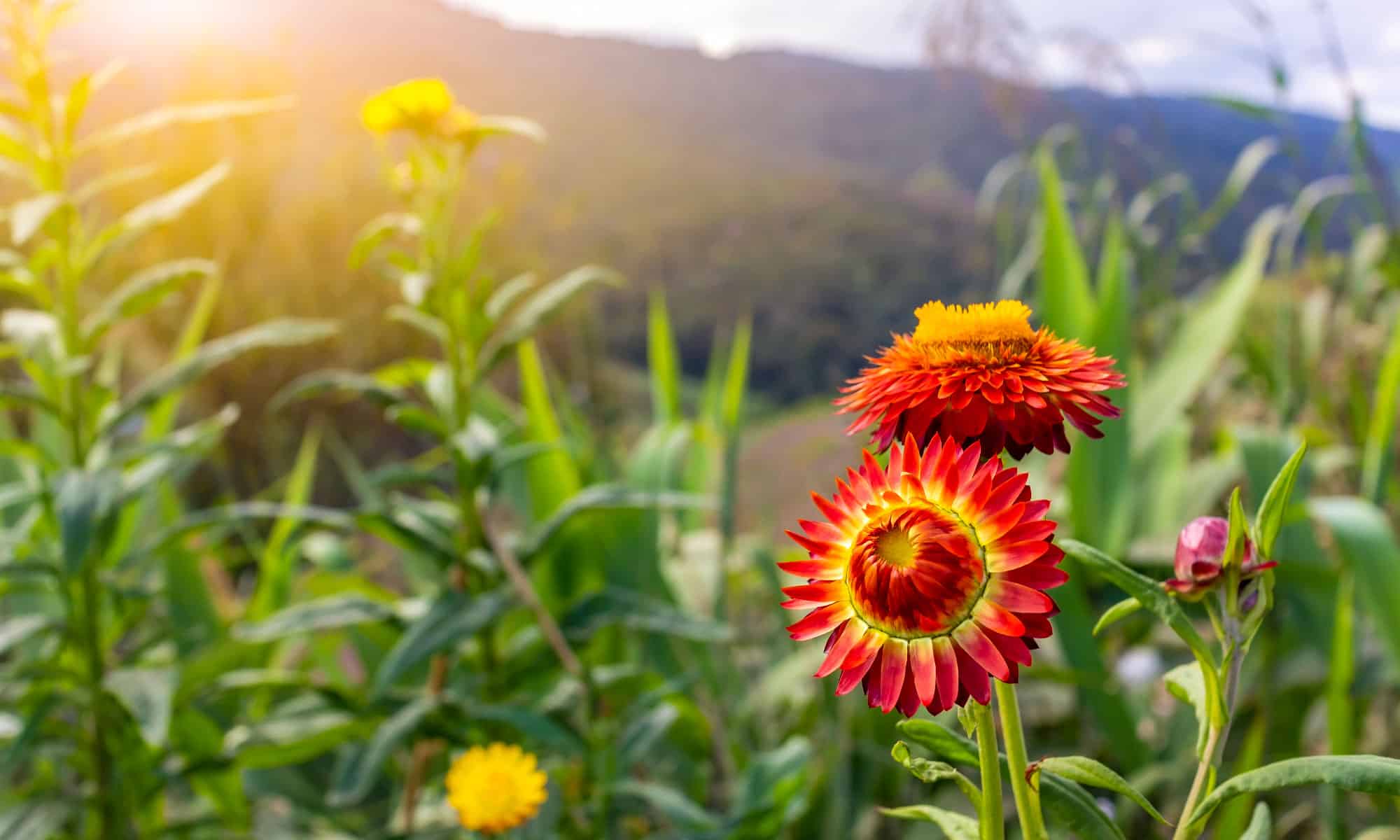Yes, spring is the time for gorgeous blooms but even in the month of July, you can still plant some perennials. Discover seven perennial flowers you can still plant in July!
7 Perennial Flowers You Can Still Plant in July
1. Blanket Flower
Scientific name: Gaillardia x grandiflora
With their vibrant colors, blanket flowers appear to have a daisy-like appeal. These perennials prefer full sunlight, and their colors can range from red to orange to yellow. Sometimes they have a combination of two of these shades. The leaves are lance-shaped and are either deep green or grayish. Oftentimes, they are somewhat hairy. They can attract bees and butterflies, they thrive in well-drained soil, and they’re drought-resistant. They usually bloom in late spring to early fall. Native Americans associate this flower with courage and bravery.
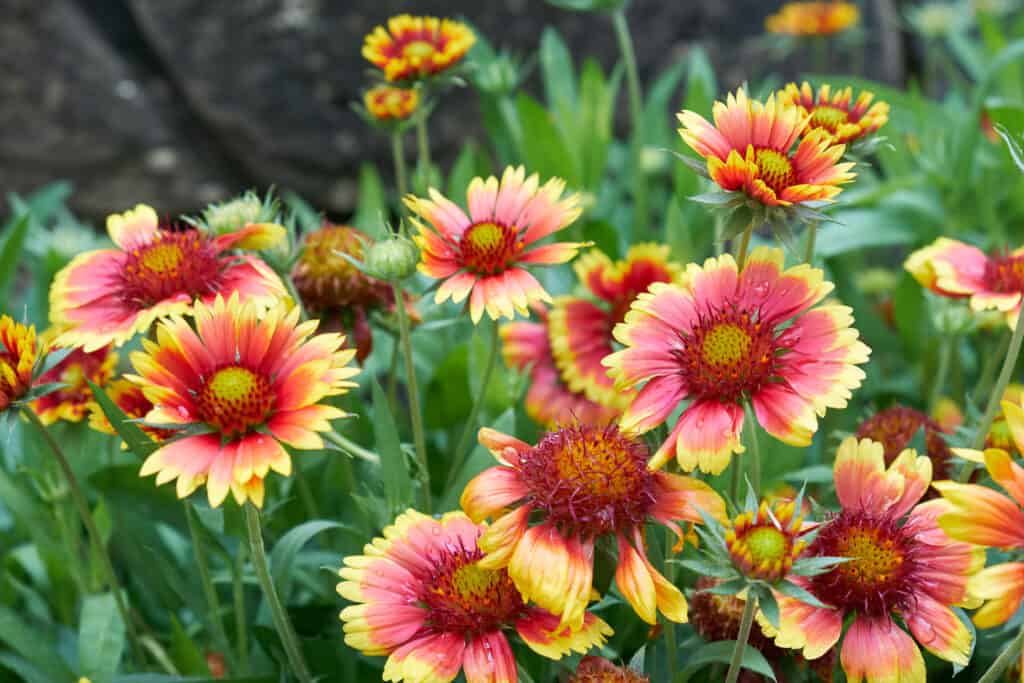
Blanket flowers have a similar appearance to daisies.
©iStock.com/Iseo Yang
2. Blazing Star
Scientific name: Liatris spicata
The blazing star is native to North America, and it prefers soil that is well-drained though it can put up with any type of soil. When it comes to colors, you can find white and lavender as well as shades of purple or pink. The flowers have tall spikes that are made up of very small star-shaped tiny flowers. Even though the original color is purple, the color variety is beautiful, which gives you plenty to select from. These flowers thrive in hard soil conditions so as long as they are in full sunlight, they make a great addition to your garden. Plus, they attract pollinators like bees and butterflies, which help your garden flourish.

Blazing stars are great for attracting pollinators like butterflies.
©Media Marketing/Shutterstock.com
3. Catmint
Scientific name: Nepeta
Catmint is a low-growing perennial. It’s made up of dense clusters called spikes. These flowers are low maintenance and come in a few colors such as pink, lavender, and blue, which add a special touch to your garden. They’re a favorite for many not only for their beauty but also for having calming properties when consumed as tea. Catmint is also fantastic when used as seasoning for your dishes. The bloom lasts until early summer and can come back again in early fall if it gets cut or nicely trimmed. They are great pollinator allies, and they can be found in grassland, meadows, and prairies.
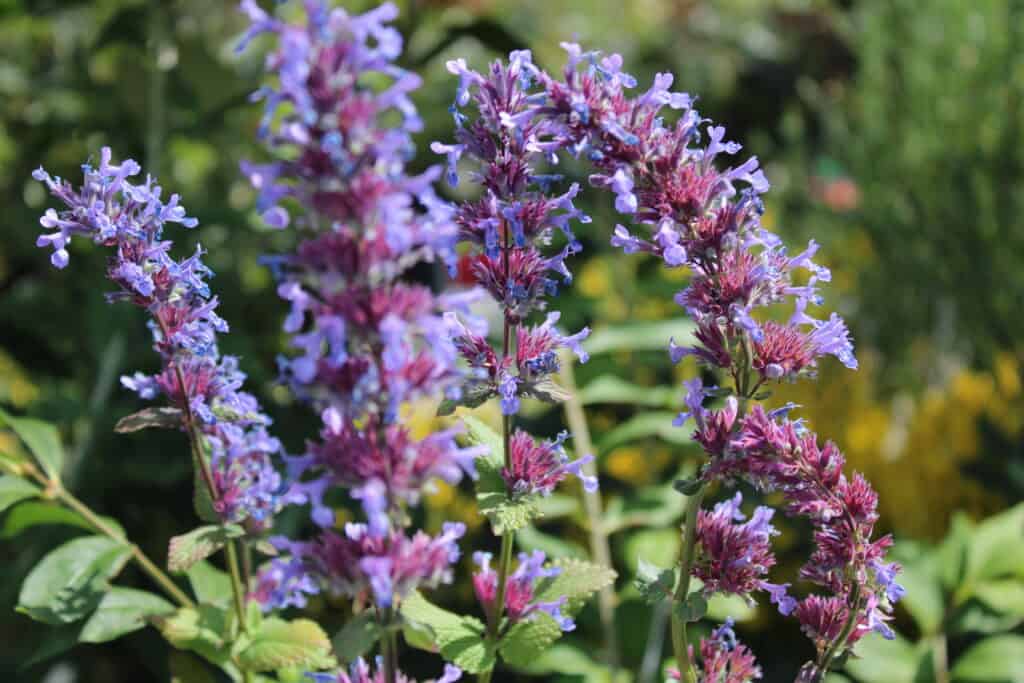
Catmint is low-maintenance.
©iStock.com/Martina Unbehauen
4. Bee Balm
Scientific name: Monarda
The name bee balm comes from the tight relationship between these flowers and bees. For the most part, the plants can grow up to four feet though some grow higher. The leaves, when crushed, have a slight and pleasant mint flavor. The colors are white, purple, red, and pink. They are the go-to flowers for hummingbirds, bees, and butterflies as they are rich in nectar. These flowers are also great for treating colds and soothing sore throats. They make excellent aromatic herbal tea.
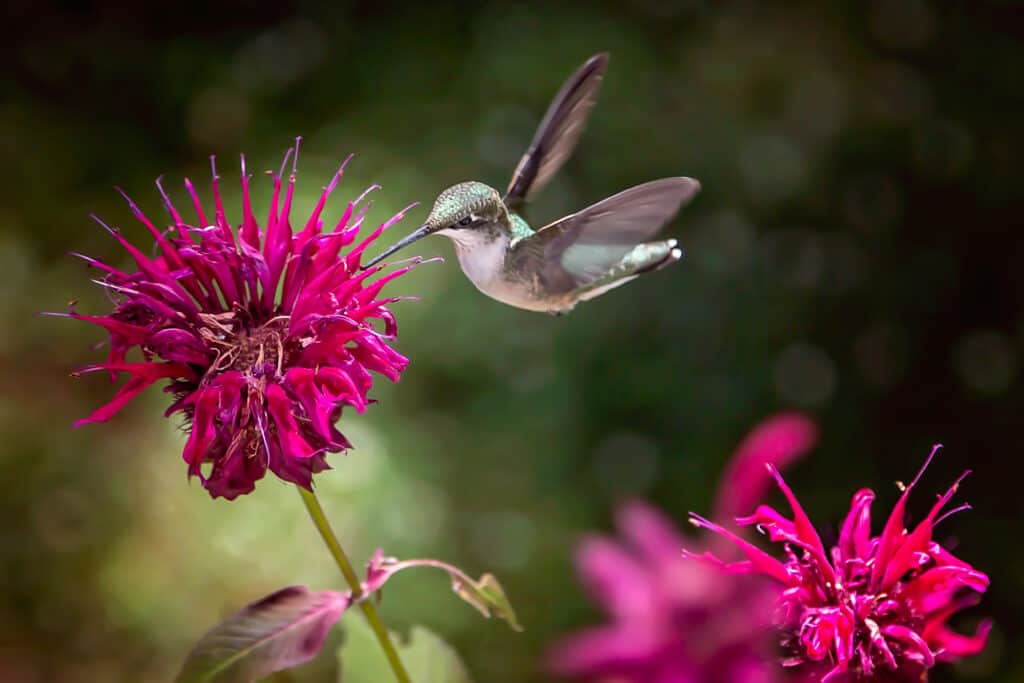
Bee balm is a go-to for hummingbirds.
©iStock.com/Cavan Images
5. Garden Phlox
Scientific name: Phlox paniculate
Garden phlox is native to North America. These flowers possess great medicinal properties according to Native Americans. They are a choice for cottage gardens and mixed flower beds for their beauty and their fragrance. They love the sun and may be pink, purple, or lavender. These flowers grow upright sometimes reaching up to four feet tall. Their leaves are deep green and they like medium moisture so long as the soil is well drained. They need a bit of space so that they don’t develop any mildew. This plant can be quite finicky and may not be the best for beginners.

Garden phlox adds a beautiful pop of color to your garden.
©iStock.com/Lurida
6. Blue Fescue
Scientific name: Festuca glauca
Blue fescue is not quite a flower but it has its own appeal. It’s an ornamental grass that enjoys full sun and can grow up to eight inches tall. It’s a showy plant that boats a silver blue foliage. It’s definitely eye-catching in the garden. Its blades resemble needles. The texture is fine and serves wonderfully when you need to create a border, ground cover, or set up your rock garden.

Blue fescue has a distinctive silvery blue color.
©Martina Unbehauen/Shutterstock.com
7. Hardy Geranium
Scientific name: Geranium bohemicum
Hardy geraniums give you quite a variety to select from when it comes to shapes, colors, and sizes. With over 300 species to choose from, you’re sure to find one that perfectly complements your garden. Typically, these are short plants that only rise up to 12 inches. They look great in border gardens and serve well as ground cover. If there is a little nook in your garden and that could use a bit of color, this is a fantastic perennial to add.
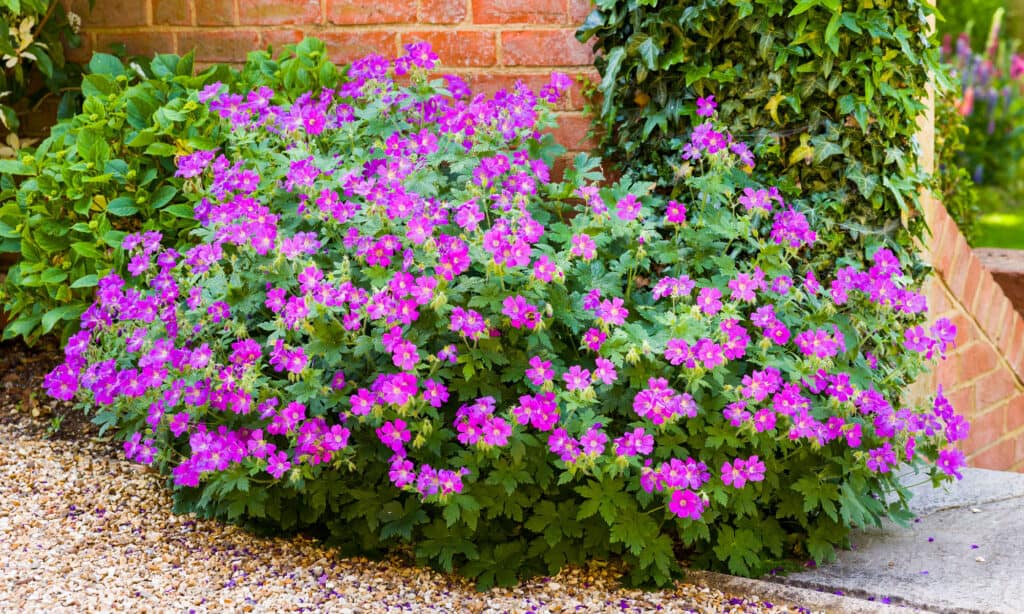
There is a wide variety of hardy geraniums you can choose from to fit your garden.
©Paul Maguire/Shutterstock.com
Thank you for reading! Have some feedback for us? Contact the AZ Animals editorial team.

